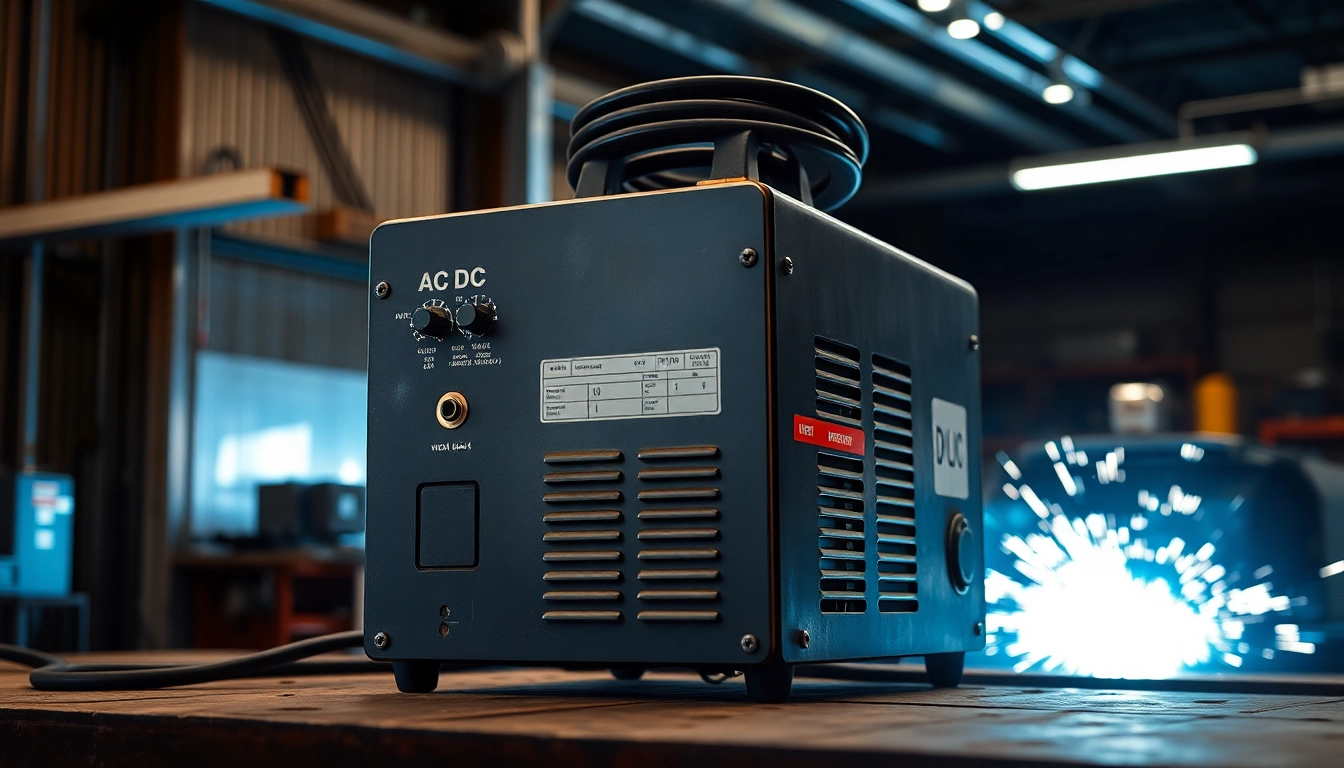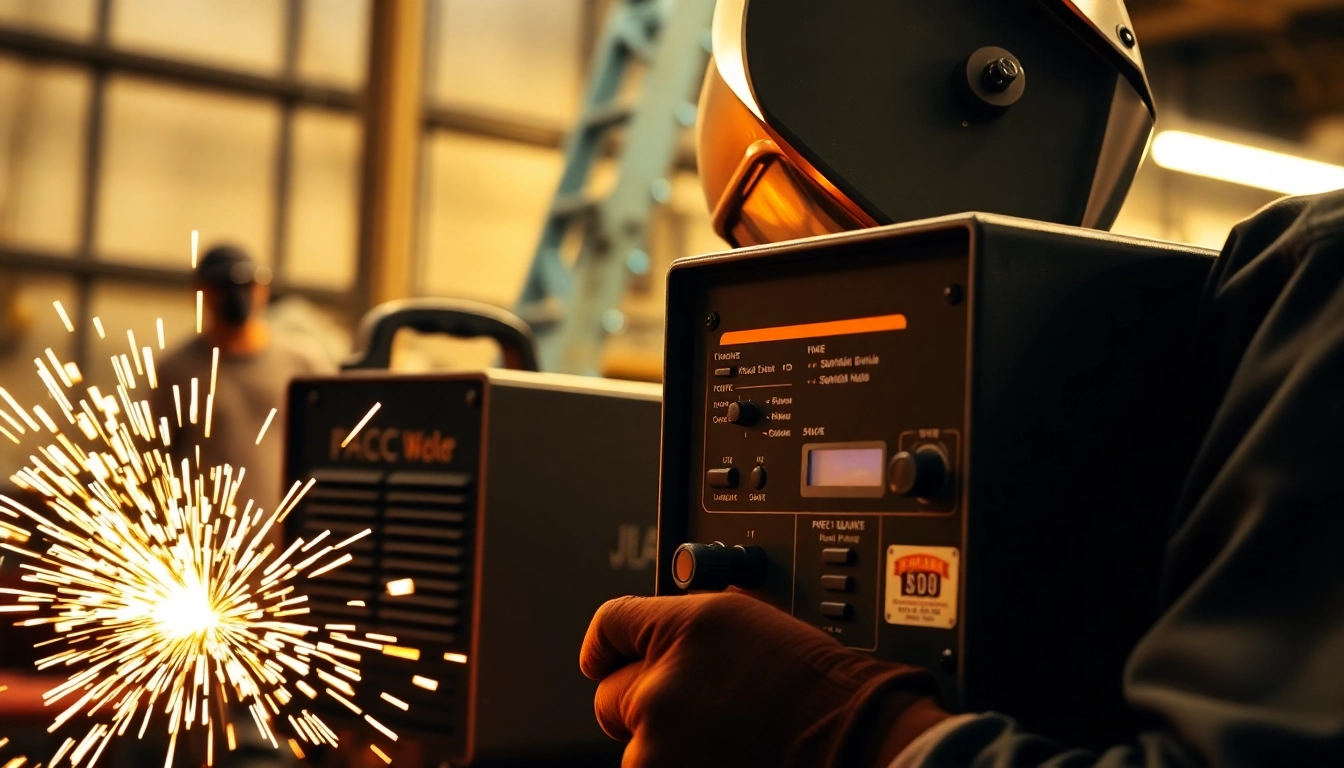1. Understanding AC DC TIG Welders
What is an AC DC TIG Welder?
An ac dc tig welder is an advanced welding apparatus that allows the welder to use both alternating current (AC) and direct current (DC) in the welding process. This remarkable feature enables versatility in welding, accommodating various metals and thicknesses. AC is typically used for aluminum and magnesium, while DC is used for ferrous metals like steel and stainless steel. The choice between AC and DC allows for more control over the welding process, making it easier to achieve clean and precise welds regardless of the material.
Key Components and Features
AC DC TIG welders come equipped with several critical components that enhance their usability and efficiency:
- TIG Torch: The TIG torch is the primary tool for directing the welding arc and can be fitted with different sizes of tungsten electrodes based on the application.
- Power Source: The heart of the welding machine, where the operator can switch between AC and DC modes. High-quality welders have features that allow for fine-tuning of the output voltage and amperage.
- Control Panel: Digital or analog displays that facilitate adjustments to welding parameters, including current settings and post-flow gas time.
- Cooling System: Many AC DC TIG welders incorporate effective cooling systems (either air or water-cooled) to prevent overheating, especially during prolonged use.
How AC and DC Current Function Together
The interaction between AC and DC currents in TIG welding is fundamental to understanding the process. AC current alternates in direction, unlike DC, which flows in a single direction. This alternating action in AC helps to break down surface oxidation on materials like aluminum, facilitating clean bonding. Furthermore, the ability to switch to DC allows the operator to effectively penetrate thick materials and weld finer details with precision. This duality makes AC DC TIG welders suitable for a wide range of applications, from artistic designs to industrial applications.
2. Advantages of Using an AC DC TIG Welder
Versatility in Welding Different Metals
One of the most significant advantages of using an AC DC TIG welder is the versatility it offers. Welders can easily adapt to various materials, including:
- Aluminum: Ideal for AC mode, allowing for stronger bonds.
- Stainless Steel: Works well under DC mode, making it easier to manage heat input and prevent warping.
- Mild Steel: Also effectively welded using DC, providing clean results.
Precision and Control
TIG welding is known for its precision, and AC DC TIG welders enhance this quality. The ability to adjust current amplitude, frequency, and duty cycle enables welders to precisely control the heat input. This precision is critical for applications that require a high level of craftsmanship. In essence, the welder’s hands are in direct command of the process, which is reflected in the quality of the final weld.
Reduced Heat Effects on Workpieces
Another notable advantage is the reduced heat affected zone (HAZ) that AC DC TIG welders create. By controlling the heat input, the operator can ensure that they do not weaken surrounding material or change its properties. This is especially beneficial when dealing with thinner materials or sensitive metals, reducing the risk of distortion or burn-through.
3. Choosing the Right AC DC TIG Welder
Evaluating Your Welding Projects
Before purchasing an AC DC TIG welder, it’s crucial to evaluate the types of projects you intend to undertake. Consider the materials you’ll be working with, their thickness, and the welding processes you’ll require. For those who work primarily with aluminum, investing in a welder with robust AC capabilities might be a priority, whereas steel fabricators may benefit more from a model with advanced DC settings.
Comparing Brands and Models
The market for AC DC TIG welders is diverse, featuring several reputable brands, each offering unique models and features. Popular brands like Miller Electric, Lincoln Electric, PrimeWeld, and Everlast have established themselves as trusted names in the industry. When comparing models, consider the following:
- Welding Output: Look for the maximum and minimum amperage output to ensure the welder meets your specific needs.
- Features: Digital displays, memory settings, and advanced features like pulse welding can enhance versatility.
- Portability: Depending on your workspace, you may need a machine that is lightweight and easy to transport.
Budget Considerations
AC DC TIG welders come in a range of prices, from budget-friendly models to high-end professional machines. Setting a budget will help narrow down the choices and ensure you find a model that meets your welding needs without overspending. It’s recommended to weigh the initial cost against potential long-term savings from better efficiency and durability.
4. Essential Accessories for Your AC DC TIG Welder
Choosing the Right Tungsten Electrodes
The choice of tungsten electrode is vital for achieving clean and effective welds. The two most common types are:
- Pure Tungsten: Typically used for AC welding of aluminum, offering a clean arc.
- Thoriated Tungsten: Ideal for DC welding on steel; however, it’s essential to handle it properly due to its radioactive properties.
Choosing the correct diameter and type of tungsten relative to your material and thickness significantly impacts the quality of your welds.
Shielding Gases and Their Importance
Shielding gas plays a critical role in protecting the weld pool from contamination. Argon is most commonly used for both AC and DC TIG welding. For welding aluminum in AC mode, a mix of argon and helium can enhance arc stability and increase heat input. Understanding how the choice of shielding gas affects overall results is crucial for optimal welding performance.
Protective Gear for Safe Operation
Safety should always be a top priority when welding. Essential protective gear includes:
- Welding Helmet: A proper helmet protects the eyes from harmful radiation and ensures the welder can see the weld pool clearly.
- Gloves: Heat-resistant gloves should be used to protect hands from burns.
- Clothing: Flame-resistant clothing is advisable, along with protective footwear to safeguard against hot metal splashes.
5. Troubleshooting Common Issues with AC DC TIG Welders
Common Welding Defects
Even experienced welders can encounter challenges. Here are some common defects:
- Poor Penetration: This can often be resolved by adjusting the current settings or speed of the weld.
- Porosity: Caused by contamination or improper shielding gas, ensuring that the workpiece is clean and the right gas is used can prevent this.
- Weld Cracking: Often occurs due to rapid cooling. Adjusting the heat input or using the right filler material may alleviate this issue.
Electrical and Setup Problems
Electrical issues can also arise from improper setup. Always double-check connections, ensuring cables are well-secured, and adjust settings to match the thickness of materials being used. Regular maintenance checks on the power supply can also help prevent these issues.
Maintenance Tips for Longevity
To ensure your AC DC TIG welder lasts for years, follow these maintenance tips:
- Keep it Clean: Regularly clean the torch and parts to prevent contamination.
- Inspect Regularly: Check for wear on cables and connectors, replacing faulty parts promptly.
- Store Properly: Keep your welder in a dry environment to prevent corrosion and rust.



